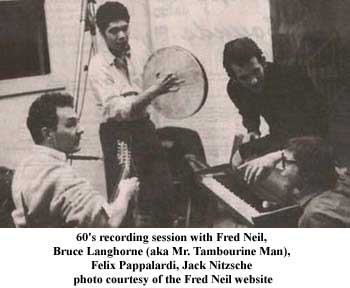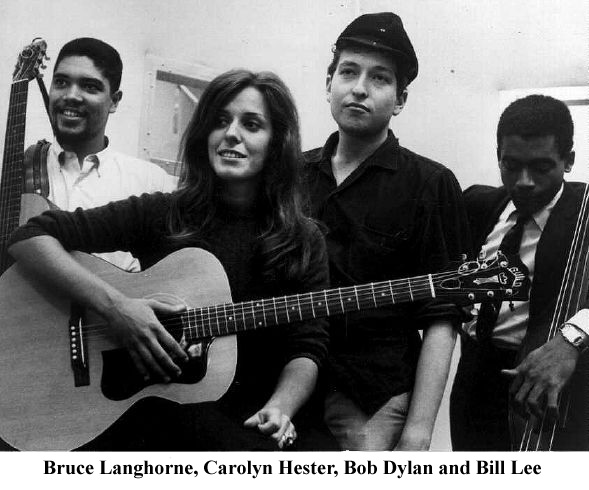|
It couldn't have been easy
to be Bruce's mother, who worked as the head of the Harlem library
system. A single mother, she raised Bruce alone in New York while
his dad headed up the English Department at the Florida Agricultural
and Mechanical College for Negroes.
"My mom used to play Schumann
a great deal on her piano - until I took it apart, to see how
it worked."
Thirteen years later, in 1963, over
300,000 people marched on Washington to demand equal rights for
all. This was the scene of Dr. Martin Luther King's "I Have
a Dream" speech. As King made his way through the crowd
to the steps of the Lincoln Memorial, Bruce and Odetta played
"Oh Freedom," stirring the passions of the crowd. You
could say they "opened" for Dr. Martin Luther King.
Bruce's mangled right hand didn't
stop him from rising to the top of the folk music scene, playing
with Dylan, Baez, Santana, Belafonte and Masekela, among others.
Bruce became a master on all guitars, violins, mandolins, pianos
and percussion. He was Dylan's first choice for concerts and
important guitar parts on his albums, including "Bringing
It All Back Home." Bruce played all these instruments, working
the strings with mostly nubs instead of his missing fingertips.
Dylan dubbed him "Mr. Tambourine Man" referencing the
over-sized tambourine Bruce played in many of their recording
sessions.
"If you had Bruce playing with
you," Dylan wrote in his 2004 autobiography, Chronicles,
"that's all you would need to do just about anything."
|
|
|
At the height of his popularity,
Bruce gave up the guitar, because "it was boring me."
He composed the sound track for a number of films including the
classic The Hired Hand and several films for Jonathon Demme,
including Melvin and Howard and Fighting Mad.
"Just occasionally you
come across these geniuses," Demme said, "Bruce Langhorne
was one. These people all tend to work in the same way: they
respond instinctually to the visual image. It was an unbelievable
experience to work with him. Bruce Langhorne has done some of
the most beautiful scoring that I have ever been involved with,
or ever known."
With acknowledgements to the Robert
Chalmers interview, "The Freewheelin' Bruce Langhorne,"
The Independent on Sunday, April 1, 2007, and Jonathon Demme's
"A Great Musician Needs Your Help," CounterPunch.org,
December 8, 2006.
|




